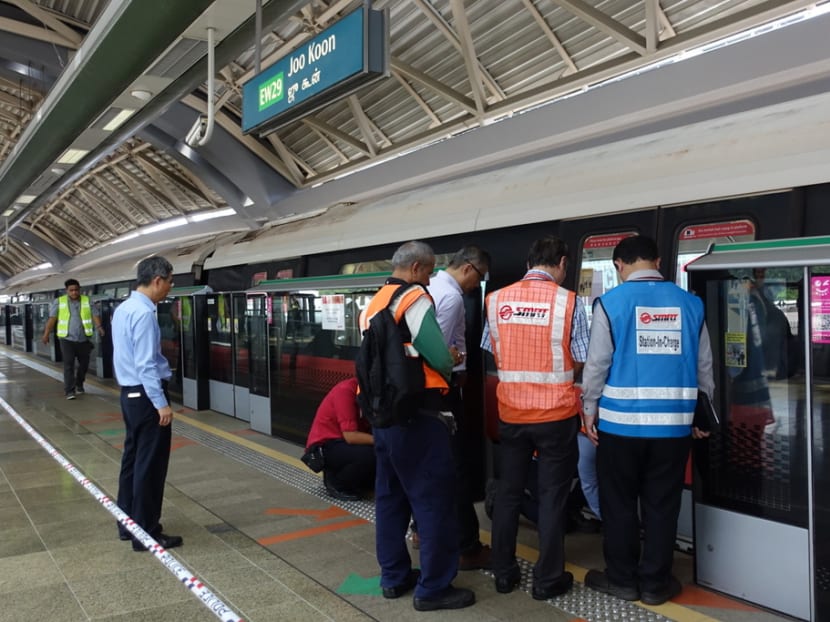Bugs in new signalling system could have caused collision: Expert
SINGAPORE – The new signaling system in place at the tail end of the East-West Line, where a train rear-ended another on Wednesday (Nov 15) morning, could still be facing “some bugs in the software, or even hardware”, said an expert.

A collision between two trains at Joo Koon MRT station on Wednesday morning (Nov 15) left 25 people injured. Photo: Koh Mui Fong/TODAY
SINGAPORE – The new signaling system in place at the tail end of the East-West Line, where a train rear-ended another on Wednesday (Nov 15) morning, could still be facing “some bugs in the software, or even hardware”, said an expert.
Assistant Professor Andrew Ng, who specialises in railway signaling control and communications at Singapore Institute of Technology, said that otherwise, the system would have kept the two trains at a safe distance from each other.
“It’s surprising to me that such things happen,” Asst Prof Ng said.
“The second train should have stopped a safety distance away from the first train. Trains are not supposed to breach that margin.”
The collision happened at Joo Koon MRT Station at about 8.20am, when a train pulled up behind a stalled train, but suddenly “moved forward unexpectedly” and “came into contact” with the first train, read a joint statement from the Land Transport Authority and operator SMRT.
Twenty-five people in the second train were injured from being thrown off-balance by the impact.
Testing of this new communication-based train control system, which allows trains to arrive every 100 seconds, down from 120 seconds, had delayed the opening of the new stations by six months.
Asst Prof Ng explained that signaling systems enforce a “safety distance” between trains on the tracks.
Typically, trains need to stop “a train length, or train carriage length” from one another. Because of this safeguard, human error was unlikely, the don said.
There could have been a faulty signal sent to the second train, telling it to move, he added.
Asst Prof Zhou Yi, also from the Singapore Institute of Technology, said that the new signalling system is designed to guarantee safety and avoid collisions.
Train speeds need to be restricted and emergency brakes activated when another train is stalled at a certain distance away, he added.
For this system, safety distance is “dynamically adjusted according to the train speed in front”, said Asst Prof Zhou, who is deputy chair of the railway and transportation technical committee in the Institution of Engineers, Singapore.








